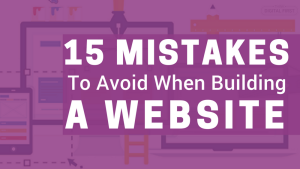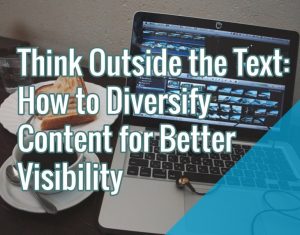October 5, 2016
 Video is an awesome kind of content that (often) helps businesses grow in several different directions: namely conversion, traffic, and branding.
Video is an awesome kind of content that (often) helps businesses grow in several different directions: namely conversion, traffic, and branding.
The rapid growth of video content on the internet is inevitable. Cisco predicts that by 2020, 75% of mobile data traffic will come from video.
Judging from how Facebook, Twitter, and Instagram are working their butts off to strengthen video content on their platforms and apps, Cisco’s prediction is likely to come true. It’s almost a no-brainer for marketers to go big with their video marketing.
But going big doesn’t mean going wasteful.
Every video platform is unique. One video for all platforms is not enough. We’re not saying that you shouldn’t use every platform your business can lay their hands on (you really should), but we’re saying be clever about it.
First off, you need to know what platforms are available.
The Options
Websites is probably what you place the highest value on. Your website is where you can control and monitor what your audience sees and where they go afterwards.
YouTube is the second-largest search engine in terms of database and queries received, just behind its parent company Google. YouTube is handy for hosting videos for your website, albeit there are admittedly better options for that specific purpose.
Facebook’s new algorithm puts native video above videos that are linked from other websites (such as YouTube, Vine and Wistia). Facebook-native videos get 200% more views and 700% more engagement compared to a YouTube video embedded to Facebook.
Twitter is, unlike Facebook, more budget friendly for businesses to be discovered by their potential audiences. Businesses don’t need a certain “premium” membership to reach out to their existing audiences or leads. Also, there’s a good chance that virtually everyone these days is on Twitter.
Instagram’s timelines are 99% photos and videos. However, photos and videos on Instagram can’t contain links. That makes it hard to track how the platform is helping your business generate leads.
Snapchat, Periscope, Facebook Live, and Meerkat are the pioneers of mobile live streaming platforms. But there’s no denying that using these apps for B2B purposes is not really practical. Skype’s conference call option tramples them in terms of popularity and functionality. They’re worth looking into, but not for this particular post.
Website: For Conversion
“Conversion” is an encompassing term. It doesn’t draw a line on where it starts and where it ends. It comes in different sizes and shapes. But for the sake of simplicity, we’re going to focus on whatever goal you have for your audience while they’re on your website.
Your video’s goal may be to get more email signups, drive sales, or simply act as a funnel to drive visitors to the next page. Whatever it is, you have to figure it out before starting any campaign.
For example, Jeremy Wick from Sticker Mule said that their video’s purpose is simple: they want people to order their products. With that in mind, they made a video showing their stickers being used in real life and how easy it is to order from them.
And Jeremy said that visitors who watch their product video are twice as likely to make a purchase as visitors who don’t.
From the viewing experience perspective, though YouTube is an easy platform to use for hosting your video, Wistia offers more controls over your media.
If you’re using YouTube to host videos on your website, your visitors have to see a bunch of recommended video thumbnails. It’s not good for your conversion. (I’ll explain later.)
Wistia, on the other hand, gives you the option to customize what to show viewers after the video ends.
In a product video, the CTA (which mostly are at the end of a video) must be clear to make a real impact on viewers. If the final screen contains a bunch of other recommended videos, I can almost guarantee that viewers will forget what they just watched in a heartbeat.
With Wistia, the final shot stays on screen until viewers hit re-play or reload the browser tab. This allows you to use a strong final shot to amplify the video’s impact on viewers’ memories.
A strong CTA, whether visual or audio, can shape the next decision that viewers make. However, mistakes happen all the time in a video’s CTA, and some can hold back your conversion growth, such as an abrupt CTA.
YouTube: For Traffic
In addition to being a conversion tool, a video is also a great way to increase traffic. Let’s face it, YouTube is the second-largest search engine behind Google. It’s unwise if you don’t jump at the opportunity provided there.
But it’s also unwise to come to YouTube unprepared.
To prepare your video for YouTube, you should do a couple of things.
First, you should optimize your video’s metadata before uploading it to YouTube.
“What’s metadata?”
I’m glad you asked.
Metadata is all the information that defines the subject of a video. YouTube uses tags, video title, and the description of a video to see what it’s about.
Optimizing these key sections of your video will help rank your videos on both Google and YouTube.
How you can optimize your video metadata
Google’s search algorithm determines a video’s subject by crawling into your video’s title, description and tags. Therefore, optimizing these 3 elements is very helpful in ranking in the search results for relevant keywords.

But metadata only makes up a small portion of your video’s performance. It can’t magically take a video with terrible content to the top of search pages.
Metadata is, in essence, a way to make your video more discoverable by audiences.
strong>Proper and relevant title
Name your video with a concise and descriptive title using key phrases that people would use to find your video. Make the title as natural and engaging as possible. Do keyword research to see which keywords are better in terms of search volume and competition.
Lengthy and detailed description
One thing that has to be included in YouTube’s video description is a URL to your landing page. Always include a relevant URL to your website, whether it is a specific page or just the homepage of your website, so your viewers can find the corresponding information from your video.
Each of your videos should have a lengthy description that explains what the video’s content is all about. YouTube’s crawlers search video descriptions to mix and match the video’s relevance with search queries.
Supporting and relevant tags
Tags are the things that would not fit naturally into video description, yet that have strong relevance to the content of your video. Using ten to twenty tags is the ideal way to make use of keywords that don’t naturally fit into the video description.
There are three types of tags that are used on YouTube, they are:

Optimize the tags to cover a generic category of your video’s subject such as “DIY”, “guide”, “tutorial” or “vlog”. More descriptive phrases such as “DIY walkie talkie with 200m range” would better fit into your video description since it’s in a form of sentence.
Social Media: For Retention and Branding
Branding and retention are the benefits offered by social media with which no other medium can compete. Numerous people check on social media for opinions and recommendations when they want to try a new product.
Here’s our breakdown on how you can use Facebook and Twitter for optimized branding and retention.
Facebook
Research by BuddyMedia found out that the less people want to be at work, the more they browse Facebook.

Certain days of the week garnered more engagement than the others. The same research project found that while specific industries may differ, most industries’ employees sit around and browse Facebook on Thursdays and Fridays.
Twitter
The same study also found that tweets made at an off-peak time tend to have higher click-through rates (CTR) compared to those tweeted during Twitter’s peak times.

Also, add an image to your promotional tweets. According to HubSpot’s stats compilation, posts on all sites (not just Twitter) with visual content generally see more engagement compared to those without visual content.
Closing Thought
Video content is not a “one-for-all” kind of tool. You have to specifically design each and every one of your videos to fit a certain market segment. A video that aims to promote a product (such as an explainer video) will not do much for your branding and PR content. Likewise, a branding video should not contain too much about the product itself.
Digital & Social Articles on Business 2 Community(87)









